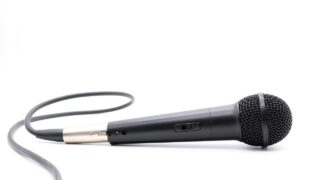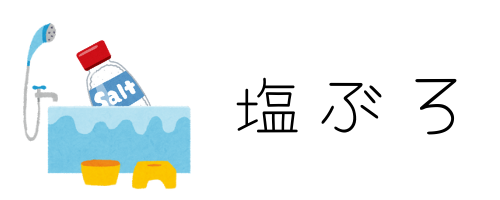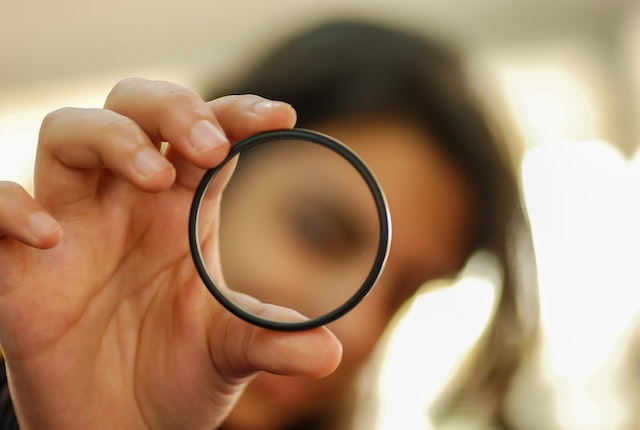ライフハックとしてではなく、英語学習にも極めて有用なのが、著名人が10分程度のプレゼンを行うTEDです。
TED Talksとは、あらゆる分野のエキスパートたちによるプレゼンテーションを無料で視聴できる動画配信サービスのことです。10年ほど前にサービスが開始されてから、政治、心理学、経済、日常生活などの幅広いコンテンツが視聴できることから人気を集めています。
RareJob English Lab
TEDは4000を超える膨大な数の動画があります。しかし慣れないうちは、動画の探し方や視聴のコツが分かりませんよね。この記事では、数多くのTEDを見てきた管理人(塩@saltandshio)が、心を揺さぶられたトークをあらすじと一緒にご紹介します。
ビジネス英会話を効率よく身につけたい方におすすめスクール
シェーン英会話
シェーンは1977年の創業以来、ネイティブ講師が英語を英語で教える「直接教授法」を採用しています。首都圏におけるスクール拠点数は、ネイティブ講師の英会話スクールでNo.1。駅から近いスクールが多いので通いやすく時間を有効に使えます。
スピークバディ パーソナルコーチング
1日1時間の短期集中トレーニングで、あなたの英語力向上をコーチが全力でサポートします。あなたの英語の世界が、劇的に変わります。
パメラ・メイヤー:嘘の見抜き方
私たちは1日に10~200回ほど嘘をつかれており、嘘を見抜く手掛かりはとてもとらえにくく、また直感で自然に分かるものでもありません。パメラ・メイヤーが、嘘の手法と、「嘘を見抜く専門家(嘘発見人)」がどうやって訓練をした嘘の検知を行うのか、その方法を見せてくれます。 また「正直さ」は守るべき価値観であると彼女は主張しています(約19分)。
[PR]無料体験レッスン実施中!全国208校、創業40年の老舗英会話スクール【シェーン英会話】私たちはみんな嘘つき
まず、嘘とはなんでしょうか。Wikipediaには「嘘は事実ではないこと。人間をだますために言う、事実とは異なる言葉。偽りとも。」とあります。そして、私たちは誰しもが嘘つきです。今回のトークで重要なのは、嘘の研究者であるパメラ・メイヤーが語る嘘の見抜き方は、単純な嘘当てゲームではないということです。
研究によると、私たちは毎日10回から200回嘘をつかれていることがわかっています。ただ、これらの嘘のほとんどはジョークの範囲内で罪のないものです。また別の研究によれば、初めて会う人同士は最初の10分で、3回嘘をつくという結果もでています。
じつは世の中には、そんな嘘を見抜く人たちがいます。、嘘を見抜く専門家(嘘発見人)という職業の人々で、パメラ・メイヤーもその一人です。嘘発見人は、嘘を見つけるための科学的な知識を持っており、それを使って真実を見つける人のことです。彼らは、非常に困難な場面で気難しい人々を相手に、毎日複雑な会話をしています。
さて、嘘はいつから嘘としての効力を持ち始めるのでしょうか。嘘発見人のお仕事は、まず最初に核となる命題を受け入れることから始めます。その命題とは、嘘は共同作業であるということです。なぜなら、どんな嘘も口から発せられたでけでは効力を持たないからです。
他の誰かがそれを信じて初めて 嘘は力を得るのです
It’s power emerges when someone else agrees to believe the lie.
つまり、「あなたが嘘をつかれたのは、嘘をつかれることを許したから」ということが言えるのです。
[PR]まずは無料カウンセリング”続けるため”の オンライン英語コーチ「スピークバディ パーソナルコーチング」嘘は国を滅ぼす?
その前に大切なのは、すべての嘘が悪いものではないということです。
時には私たちは、進んで嘘に協力します。体面を保つために、またおそらくは黙っていたほうがよいことを隠すためにです。
Sometimes we’re willing participants in deception for the sake of social dignity, maybe to keep a secret that should be kept secret, secret.
たとえば、「ちっとも太っていないのに」とか、「勉強していないから」とか、「お若く見えますね」なんていうのもあるでしょう。しかし、そんな可愛い嘘ばかりではありません。嘘はときに犯罪になり、日本でも特殊詐欺の被害は年々増しています。
令和4年8月末の特殊詐欺認知件数は832件、被害金額は16億8,060万円と前年同期に比べて、認知件数、被害金額ともに増加しており、特殊詐欺の犯人から電話がかかってきたとの通報も毎日のように寄せられています。
特殊詐欺の被害に遭わないために(埼玉県警察)
これは日本に限った事ではありません。アメリカでも国家歳入の7%にあたる何十億ドルもの損害を、嘘が与えているのです。
2重スパイや国家反逆者のような場合、嘘は国を売り渡し、国家の安全保障を危うくし、民主主義を脅かし、さらに国家の防衛に当たる人々の死を招きます。嘘は実際に深刻な問題なのです。
[PR]しちだの魔法ペンなら35日でバイリンガルに!楽天4部門1位の英会話!<七田式>嘘の本質とは
では、そんな嘘の本質とはいったいなんなのでしょうか。詐欺師のオバーランダーという人がいます。彼は大変有能な詐欺師で、彼の詐欺行為によって間違っていれば西欧諸国の銀行制度そのものを崩壊させていた可能性があった人物です。そんなオバーランダーがインタビューで語った話があります。
いいですか、一つの法則しか使ってません。ヘンリーの法則だけです。誰もが己の願望のためには、進んで何かを差し出すものだ。
Look, I’ve got one rule. And this was Henry’s rule, Look, everyone is willing to give you something. They’re ready to give you something for whatever it is they’re hungry for.
つまり、私たちが騙されないためには、自分の願望を知る必要があります。「お金持ちになりたい」「楽したい」などなど、それらの欲望に嘘は付け込んでくるのです。
私たちの願いや夢想と現実の差を、埋めようとするのが嘘なのです。実際の自分と、こうありたい自分、こんな風だったらと思う自分との差です。
Lying is an attempt to bridge that gap, to connect our wishes and our fantasies about who we wish we were, how we wish we could be, with what we’re really like.
なんと、私たちは自ら進んで現実との差を嘘で埋めようとするのです。
[PR]知って得する、知らないと損をする!すぐに役立つ相手に合った「伝え方」のコツ!嘘の見抜き方―独創的な嘘つきはいない
嘘には二つの真実があります。
- 嘘は共同作業である
- 必要に迫られて、または現実を受け入れられずに嘘をつく
では、私たちが嘘を見抜くためには一体どうすればいいのでしょうか。嘘をついている人は、以下のような4つの傾向があります。
- 無意識に、嘘の対象について距離を置く言葉を使おうをする
- 顔で嘘をついていても、体(ボディランゲージ)が真実を現している
- 問題に対して、無実な人は協力的で、有罪の人は問題から逸れたところで細かいことを説明する(本題から逃げようとする)
- 事態の深刻さとは正反対の表情(笑顔など)を浮かべている
4.は、恐ろしい犯罪を犯したあとにその問題から逃れられた安堵の表情(duping delight:欺瞞者の喜悦)と呼ばれるものです。
これらの事で分かるのは、嘘にはいくつかのパターンがあり、その型にハマった嘘をついているということです。つまり、本当に独創的でユニークな嘘つきはほとんどおらず、古典的なテクニックで人は嘘をついているということになります。
しかし、そのすべてに悪意があるわけではありません。
私たちは人間です。一日中いたるところで嘘が疑われる動作をしています。しぐさ自体は何も意味していません。
しかし、それがいくつもあったら注意が必要です。
We’re human beings. We make deceptive flailing gestures all over the place all day long. They don’t mean anything in and of themselves.
But when you see clusters of them, that’s your signal.
「あれ?変だな」という違和感を見過ごさないことが、私たちを悪い嘘から守ることになるということだと言えます。なにか疑問に思ったら、攻撃的にならずに、むしろ興味があるという様子で深く聞き出すのが、嘘を見抜く方法のひとつといえるでしょう。
[PR]検定試験合格者累計140万人!スマホ対応☆国家資格ほか資格取得ならSMART合格対策講座まとめ:大切なのは自分の道徳基準を明確に示すこと
SNSの広がりによって、嘘の世界は大きく変化しました。嘘はあちこちにあたりまえに存在しているといっても過言ではありません。では、そんな嘘だらけの世界を少しでも嘘のない、良い世界にするにはどうすればいいのでしょうか。
つまり、この真実が見えなくなった世界で私たちに必要なのは、今までよりもほんの少し自分の道徳基準を明確に示すことです。
So in this much noisier world, it might make sense for us to be just a little bit more explicit about our moral code.
あたりまえに聞こえるかもしれませんが、今よりも良い世界にする方法は、「あなたが正直者でいる」ことです。すぐには変わらないかもしれません。しかし、ひとりひとりが行動を起こせば、周りがほんの少しずつ変わり始めることでしょう。
英語全文
Okay, now I don’t want to alarm anybody in this room, but it’s just come to my attention that the person to your right is a liar. Also, the person to your left is a liar. Also the person sitting in your very seats is a liar. We’re all liars.
<全文を読む>▼クリック▼
Now speaking of trust, ever since I wrote this book, “Liespotting,” no one wants to meet me in person anymore, no, no, no, no, no. They say, “It’s okay, we’ll email you.” (Laughter) I can’t even get a coffee date at Starbucks. My husband’s like, “Honey, deception? Maybe you could have focused on cooking. How about French cooking?”
So before I get started, what I’m going to do is I’m going to clarify my goal for you, which is not to teach a game of Gotcha. Liespotters aren’t those nitpicky kids, those kids in the back of the room that are shouting, “Gotcha! Gotcha! Your eyebrow twitched. You flared your nostril. I watch that TV show ‘Lie To Me.’ I know you’re lying.” No, liespotters are armed with scientific knowledge of how to spot deception. They use it to get to the truth, and they do what mature leaders do everyday; they have difficult conversations with difficult people, sometimes during very difficult times. And they start up that path by accepting a core proposition, and that proposition is the following: Lying is a cooperative act. Think about it, a lie has no power whatsoever by its mere utterance. Its power emerges when someone else agrees to believe the lie.
So I know it may sound like tough love, but look, if at some point you got lied to, it’s because you agreed to get lied to. Truth number one about lying: Lying’s a cooperative act. Now not all lies are harmful. Sometimes we’re willing participants in deception for the sake of social dignity, maybe to keep a secret that should be kept secret, secret. We say, “Nice song.” “Honey, you don’t look fat in that, no.” Or we say, favorite of the digiratti, “You know, I just fished that email out of my spam folder. So sorry.”
But there are times when we are unwilling participants in deception. And that can have dramatic costs for us. Last year saw 997 billion dollars in corporate fraud alone in the United States. That’s an eyelash under a trillion dollars. That’s seven percent of revenues. Deception can cost billions. Think Enron, Madoff, the mortgage crisis. Or in the case of double agents and traitors, like Robert Hanssen or Aldrich Ames, lies can betray our country, they can compromise our security, they can undermine democracy, they can cause the deaths of those that defend us.
Deception is actually serious business. This con man, Henry Oberlander, he was such an effective con man British authorities say he could have undermined the entire banking system of the Western world. And you can’t find this guy on Google; you can’t find him anywhere. He was interviewed once, and he said the following. He said, “Look, I’ve got one rule.” And this was Henry’s rule, he said, “Look, everyone is willing to give you something. They’re ready to give you something for whatever it is they’re hungry for.” And that’s the crux of it. If you don’t want to be deceived, you have to know, what is it that you’re hungry for? And we all kind of hate to admit it. We wish we were better husbands, better wives, smarter, more powerful, taller, richer — the list goes on. Lying is an attempt to bridge that gap, to connect our wishes and our fantasies about who we wish we were, how we wish we could be, with what we’re really like. And boy are we willing to fill in those gaps in our lives with lies.
On a given day, studies show that you may be lied to anywhere from 10 to 200 times. Now granted, many of those are white lies. But in another study, it showed that strangers lied three times within the first 10 minutes of meeting each other. (Laughter) Now when we first hear this data, we recoil. We can’t believe how prevalent lying is. We’re essentially against lying. But if you look more closely, the plot actually thickens. We lie more to strangers than we lie to coworkers. Extroverts lie more than introverts. Men lie eight times more about themselves than they do other people. Women lie more to protect other people. If you’re an average married couple, you’re going to lie to your spouse in one out of every 10 interactions. Now you may think that’s bad. It you’re unmarried, that number drops to three.
Lying’s complex. It’s woven into the fabric of our daily and our business lives. We’re deeply ambivalent about the truth. We parse it out on an as-needed basis, sometimes for very good reasons, other times just because we don’t understand the gaps in our lives. That’s truth number two about lying. We’re against lying, but we’re covertly for it in ways that our society has sanctioned for centuries and centuries and centuries. It’s as old as breathing. It’s part of our culture, it’s part of our history. Think Dante, Shakespeare, the Bible, News of the World.
(Laughter)
Lying has evolutionary value to us as a species. Researchers have long known that the more intelligent the species, the larger the neocortex, the more likely it is to be deceptive. Now you might remember Koko. Does anybody remember Koko the gorilla who was taught sign language? Koko was taught to communicate via sign language. Here’s Koko with her kitten. It’s her cute little, fluffy pet kitten. Koko once blamed her pet kitten for ripping a sink out of the wall. (Laughter) We’re hardwired to become leaders of the pack. It’s starts really, really early. How early? Well babies will fake a cry, pause, wait to see who’s coming and then go right back to crying. One-year-olds learn concealment. (Laughter) Two-year-olds bluff. Five-year-olds lie outright. They manipulate via flattery. Nine-year-olds, masters of the cover up. By the time you enter college, you’re going to lie to your mom in one out of every five interactions. By the time we enter this work world and we’re breadwinners, we enter a world that is just cluttered with spam, fake digital friends, partisan media, ingenious identity thieves, world-class Ponzi schemers, a deception epidemic — in short, what one author calls a post-truth society. It’s been very confusing for a long time now.
What do you do? Well there are steps we can take to navigate our way through the morass. Trained liespotters get to the truth 90 percent of the time. The rest of us, we’re only 54 percent accurate. Why is it so easy to learn? There are good liars and there are bad liars. There are no real original liars. We all make the same mistakes. We all use the same techniques. So what I’m going to do is I’m going to show you two patterns of deception. And then we’re going to look at the hot spots and see if we can find them ourselves. We’re going to start with speech.
(Video) Bill Clinton: I want you to listen to me. I’m going to say this again. I did not have sexual relations with that woman, Miss Lewinsky. I never told anybody to lie, not a single time, never. And these allegations are false. And I need to go back to work for the American people. Thank you.
Pamela Meyer: Okay, what were the telltale signs? Well first we heard what’s known as a non-contracted denial. Studies show that people who are overdetermined in their denial will resort to formal rather than informal language. We also heard distancing language: “that woman.” We know that liars will unconsciously distance themselves from their subject using language as their tool. Now if Bill Clinton had said, “Well, to tell you the truth … “or Richard Nixon’s favorite, “In all candor … “he would have been a dead giveaway for any liespotter than knows that qualifying language, as it’s called, qualifying language like that, further discredits the subject. Now if he had repeated the question in its entirety, or if he had peppered his account with a little too much detail — and we’re all really glad he didn’t do that — he would have further discredited himself. Freud had it right. Freud said, look, there’s much more to it than speech: “No mortal can keep a secret. If his lips are silent, he chatters with his fingertips.” And we all do it no matter how powerful you are. We all chatter with our fingertips. I’m going to show you Dominique Strauss-Kahn with Obama who’s chattering with his fingertips.
(Laughter)
Now this brings us to our next pattern, which is body language. With body language, here’s what you’ve got to do. You’ve really got to just throw your assumptions out the door. Let the science temper your knowledge a little bit. Because we think liars fidget all the time. Well guess what, they’re known to freeze their upper bodies when they’re lying. We think liars won’t look you in the eyes. Well guess what, they look you in the eyes a little too much just to compensate for that myth. We think warmth and smiles convey honesty, sincerity. But a trained liespotter can spot a fake smile a mile away. Can you all spot the fake smile here? You can consciously contract the muscles in your cheeks. But the real smile’s in the eyes, the crow’s feet of the eyes. They can not be consciously contracted, especially if you overdid the Botox. Don’t overdo the Botox; nobody will think you’re honest.
Now we’re going to look at the hot spots. Can you tell what’s happening in a conversation? Can you start to find the hot spots to see the discrepancies between someone’s words and someone’s actions? Now I know it seems really obvious, but when you’re having a conversation with someone you suspect of deception, attitude is by far the most overlooked but telling of indicators.
An honest person is going to be cooperative. They’re going to show they’re on your side. They’re going to be enthusiastic. They’re going to be willing and helpful to getting you to the truth. They’re going to be willing to brainstorm, name suspects, provide details. They’re going to say, “Hey, maybe it was those guys in payroll that forged those checks.” They’re going to be infuriated if they sense they’re wrongly accused throughout the entire course of the interview, not just in flashes; they’ll be infuriated throughout the entire course of the interview. And if you ask someone honest what should happen to whomever did forge those checks, an honest person is much more likely to recommend strict rather than lenient punishment.
Now let’s say you’re having that exact same conversation with someone deceptive. That person may be withdrawn, look down, lower their voice, pause, be kind of herky-jerky. Ask a deceptive person to tell their story, they’re going to pepper it with way too much detail in all kinds of irrelevant places. And then they’re going to tell their story in strict chronological order. And what a trained interrogator does is they come in and in very subtle ways over the course of several hours, they will ask that person to tell that story backwards, and then they’ll watch them squirm, and track which questions produce the highest volume of deceptive tells. Why do they do that? Well we all do the same thing. We rehearse our words, but we rarely rehearse our gestures. We say “yes,” we shake our heads “no.” We tell very convincing stories, we slightly shrug our shoulders. We commit terrible crimes, and we smile at the delight in getting away with it. Now that smile is known in the trade as “duping delight.”
And we’re going to see that in several videos moving forward, but we’re going to start — for those of you who don’t know him, this is presidential candidate John Edwards who shocked America by fathering a child out of wedlock. We’re going to see him talk about getting a paternity test. See now if you can spot him saying, “yes” while shaking his head “no,” slightly shrugging his shoulders.
(Video) John Edwards: I’d be happy to participate in one. I know that it’s not possible that this child could be mine, because of the timing of events. So I know it’s not possible. Happy to take a paternity test, and would love to see it happen. Interviewer: Are you going to do that soon? Is there somebody — JE: Well, I’m only one side. I’m only one side of the test. But I’m happy to participate in one.
PM: Okay, those head shakes are much easier to spot once you know to look for them. There’re going to be times when someone makes one expression while masking another that just kind of leaks through in a flash. Murderers are known to leak sadness. Your new joint venture partner might shake your hand, celebrate, go out to dinner with you and then leak an expression of anger. And we’re not all going to become facial expression experts overnight here, but there’s one I can teach you that’s very dangerous, and it’s easy to learn, and that’s the expression of contempt. Now with anger, you’ve got two people on an even playing field. It’s still somewhat of a healthy relationship. But when anger turns to contempt, you’ve been dismissed. It’s associated with moral superiority. And for that reason, it’s very, very hard to recover from. Here’s what it looks like. It’s marked by one lip corner pulled up and in. It’s the only asymmetrical expression. And in the presence of contempt, whether or not deception follows — and it doesn’t always follow — look the other way, go the other direction, reconsider the deal, say, “No thank you. I’m not coming up for just one more nightcap. Thank you.”
Science has surfaced many, many more indicators. We know, for example, we know liars will shift their blink rate, point their feet towards an exit. They will take barrier objects and put them between themselves and the person that is interviewing them. They’ll alter their vocal tone, often making their vocal tone much lower. Now here’s the deal. These behaviors are just behaviors. They’re not proof of deception. They’re red flags. We’re human beings. We make deceptive flailing gestures all over the place all day long. They don’t mean anything in and of themselves. But when you see clusters of them, that’s your signal. Look, listen, probe, ask some hard questions, get out of that very comfortable mode of knowing, walk into curiosity mode, ask more questions, have a little dignity, treat the person you’re talking to with rapport. Don’t try to be like those folks on “Law & Order” and those other TV shows that pummel their subjects into submission. Don’t be too aggressive, it doesn’t work.
Now we’ve talked a little bit about how to talk to someone who’s lying and how to spot a lie. And as I promised, we’re now going to look at what the truth looks like. But I’m going to show you two videos,two mothers — one is lying,one is telling the truth. And these were surfaced by researcher David Matsumoto in California. And I think they’re an excellent example of what the truth looks like.
This mother, Diane Downs, shot her kids at close range, drove them to the hospital while they bled all over the car, claimed a scraggy-haired stranger did it. And you’ll see when you see the video, she can’t even pretend to be an agonizing mother. What you want to look for here is an incredible discrepancy between horrific events that she describes and her very, very cool demeanor. And if you look closely, you’ll see duping delight throughout this video.
(Video) Diane Downs: At night when I close my eyes, I can see Christie reaching her hand out to me while I’m driving, and the blood just kept coming out of her mouth. And that — maybe it’ll fade too with time — but I don’t think so. That bothers me the most.
PM: Now I’m going to show you a video of an actual grieving mother, Erin Runnion, confronting her daughter’s murderer and torturer in court. Here you’re going to see no false emotion, just the authentic expression of a mother’s agony.
(Video) Erin Runnion: I wrote this statement on the third anniversary of the night you took my baby, and you hurt her, and you crushed her, you terrified her until her heart stopped. And she fought, and I know she fought you. But I know she looked at you with those amazing brown eyes, and you still wanted to kill her. And I don’t understand it, and I never will.
PM: Okay, there’s no doubting the veracity of those emotions.
Now the technology around what the truth looks like is progressing on, the science of it. We know for example that we now have specialized eye trackers and infrared brain scans, MRI’s that can decode the signals that our bodies send out when we’re trying to be deceptive. And these technologies are going to be marketed to all of us as panaceas for deceit, and they will prove incredibly useful some day. But you’ve got to ask yourself in the meantime: Who do you want on your side of the meeting, someone who’s trained in getting to the truth or some guy who’s going to drag a 400-pound electroencephalogram through the door?
Liespotters rely on human tools. They know, as someone once said, “Character’s who you are in the dark.” And what’s kind of interesting is that today we have so little darkness. Our world is lit up 24 hours a day. It’s transparent with blogs and social networks broadcasting the buzz of a whole new generation of people that have made a choice to live their lives in public. It’s a much more noisy world. So one challenge we have is to remember, oversharing, that’s not honesty. Our manic tweeting and texting can blind us to the fact that the subtleties of human decency — character integrity — that’s still what matters, that’s always what’s going to matter. So in this much noisier world, it might make sense for us to be just a little bit more explicit about our moral code.
When you combine the science of recognizing deception with the art of looking, listening, you exempt yourself from collaborating in a lie. You start up that path of being just a little bit more explicit, because you signal to everyone around you, you say, “Hey, my world, our world, it’s going to be an honest one. My world is going to be one where truth is strengthened and falsehood is recognized and marginalized.” And when you do that, the ground around you starts to shift just a little bit.
And that’s the truth. Thank you.
<閉じる>
\ ほかにも気になるトークが満載! /









